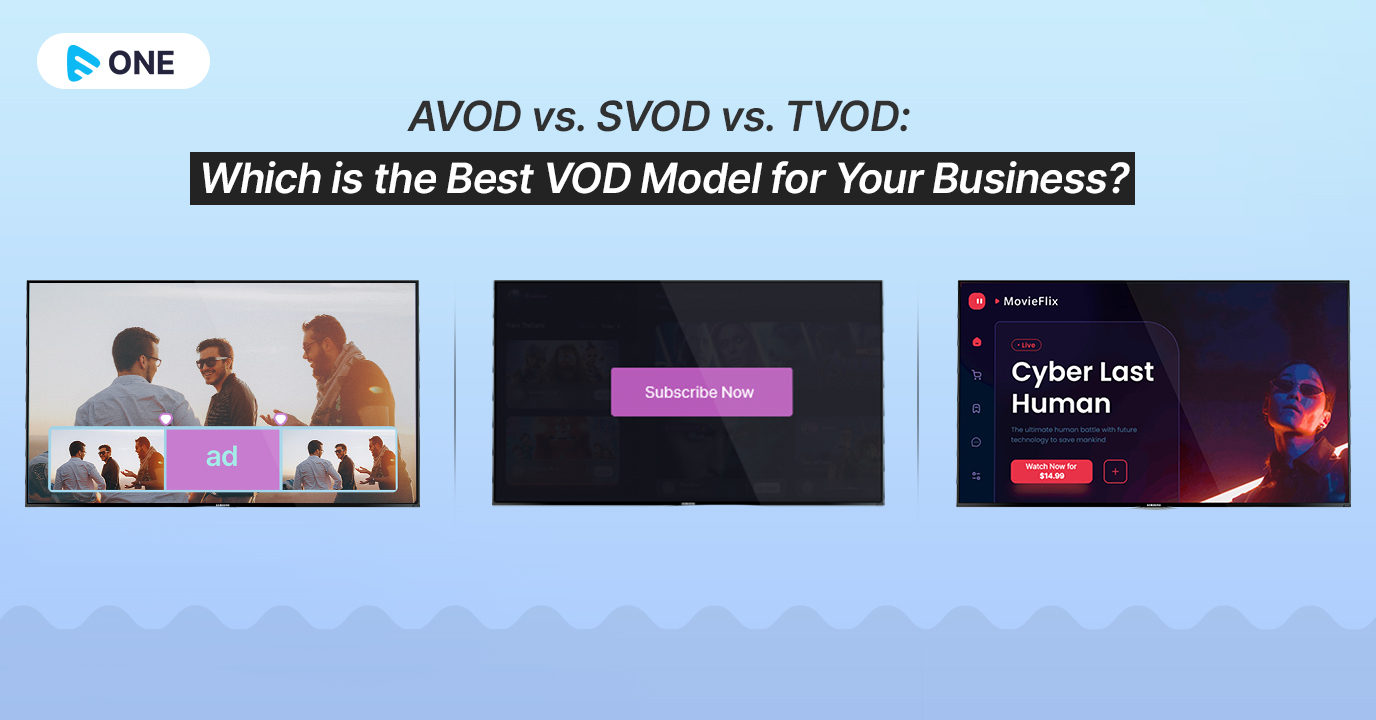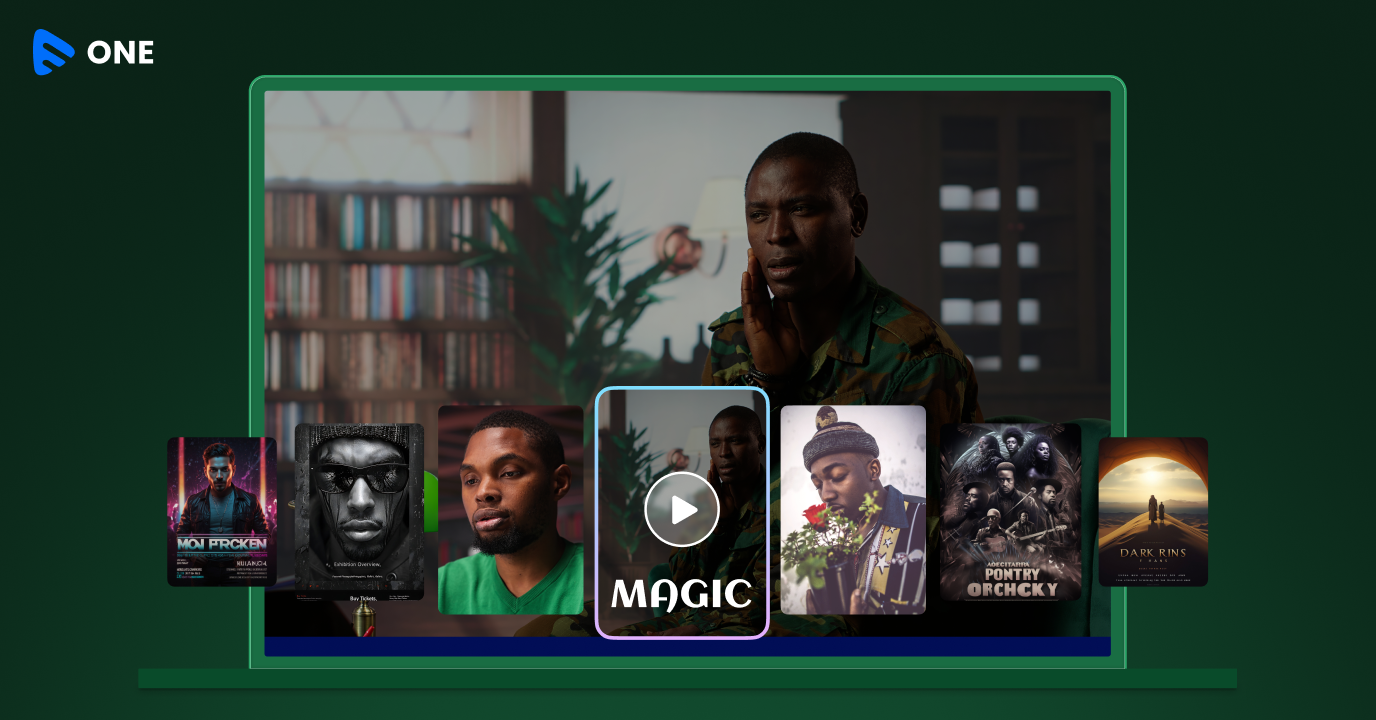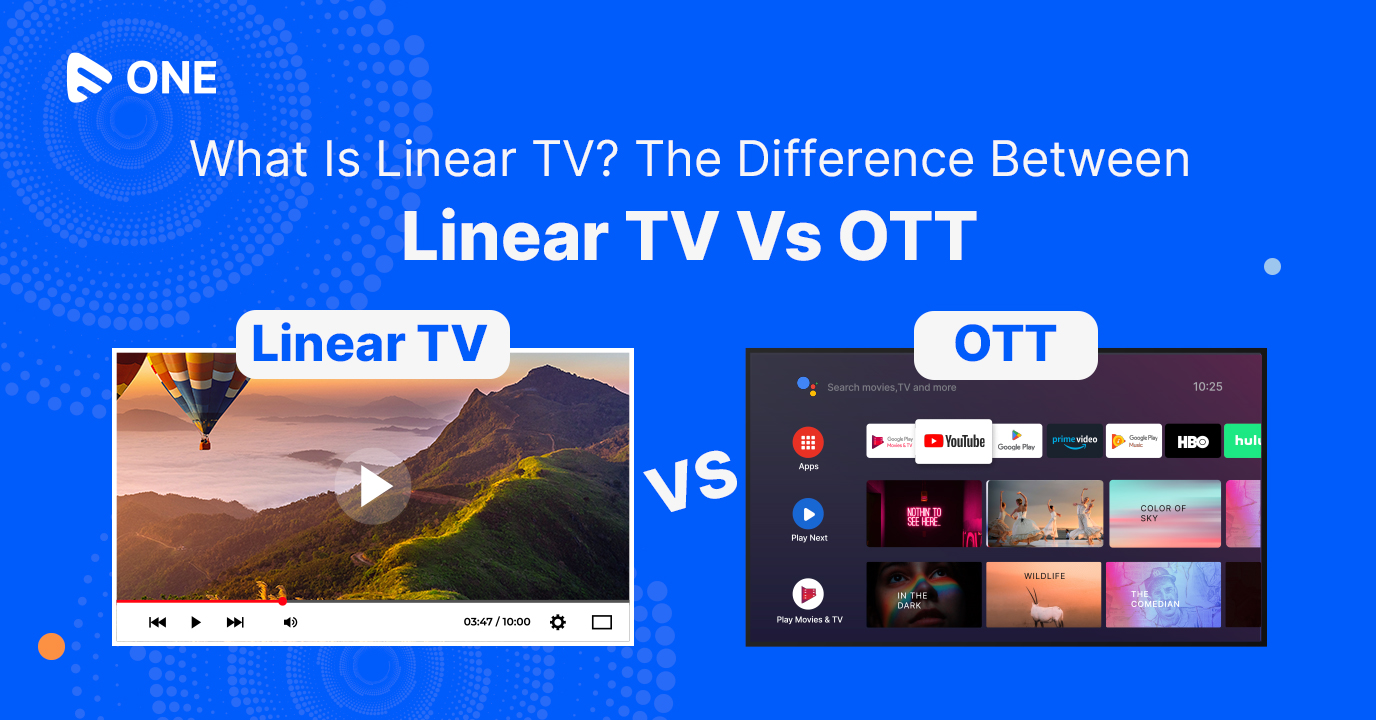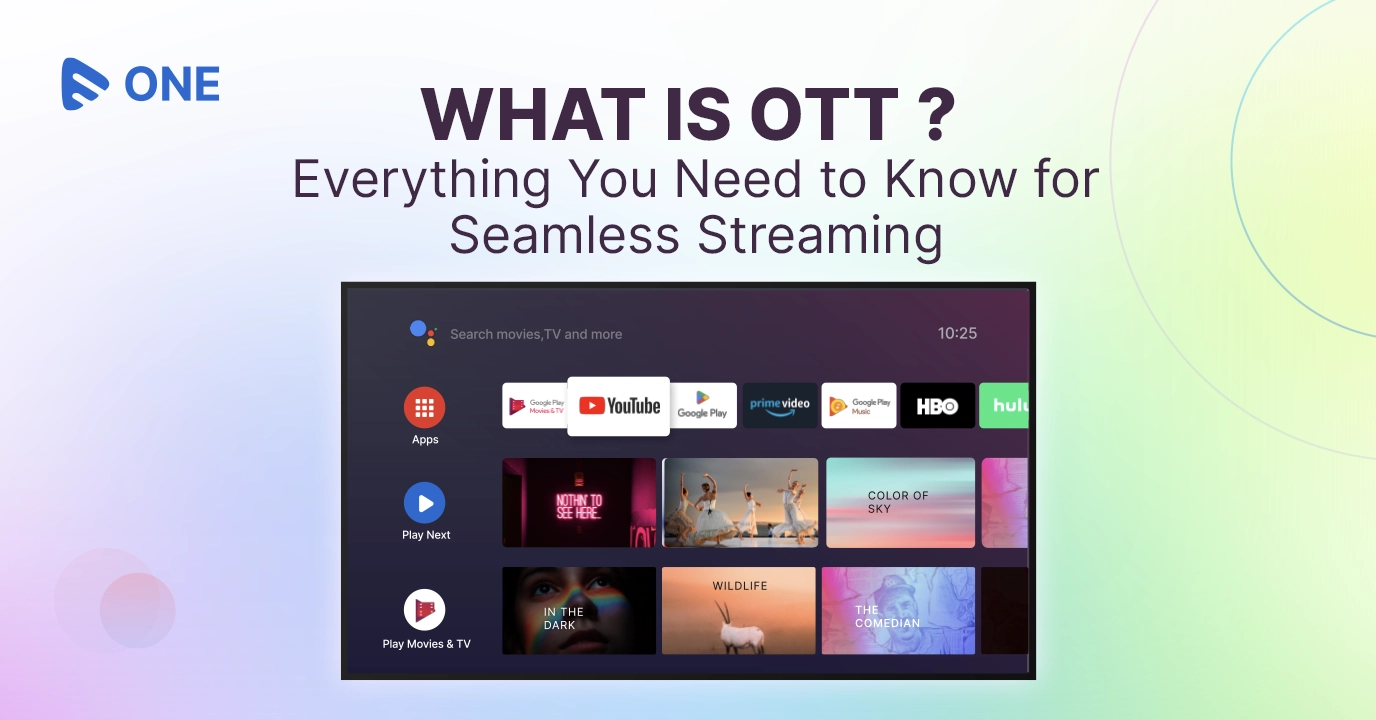Video streaming is a lucrative business nowadays giving opportunities to earn a good amount of revenue but how does one do it? Today, video consumption is one of the major uses of the internet and people are streaming content like never before. Creating and selling videos online can give you an earning potential if you use the right strategies. So how does video make money on the internet and how can you monetize your videos?
There are different ways in which we can monetize videos and in this blog on AVOD vs SVOD vs TVOD, we will discuss all of them and also give suggestions on which one works best for you. When we monetize a video, it generates revenue on the internet and there are several ways to monetize your content.
Types of Monetization:
Monetizing content on the internet especially video content can be divided majorly into three categories. These categories are mainly based on how the revenue is generated and who pays the receiver. Let us look at all of these categories and get some insights about their benefits and who should use them for their content.
Subscriber Video-On-Demand (SVOD)
SVOD monetization essentially means users are paying a recurring fee for the service to access the content created. The terms of the subscription are decided and intimated to the users who can opt for it if they wish to watch the content. Once the subscription is paid, the eligible content on the platform becomes available to the subscribers limited to the time for which they have subscribed for the service.
The best example of an SVOD model of monetization is Netflix. Users all around the globe pay a monthly subscription fee that varies from country to country and gets access to a certain number of screens based on the plan. These days plans also differ based on the resolution opted for. A basic plan in the United States starts at US $9.99 per month and the plans can go as high as US $19.99 per month for premium accounts offering Ultra HD content and Netflix Spatial Audio support. By maximize your Netflix subscription’s value, you can ensure you’re getting the most out of your entertainment.
Major entertainment content broadcasters use SVOD in some form or the other.
Advertiser Video-On-Demand (AVOD)
AVOD monetization refers to using ads as the primary source of revenue for the content. When AVOD monetization is deployed, the end user or the viewer does not pay any money to watch the content but instead has to watch advertisements displayed before, in between, or after the content. The advertiser then pays the broadcaster based on the impressions or leads as mutually agreed on.
YouTube is a prime example of the AVOD model of monetization. A user logs into the website or app watches content and exits without paying anything. The channels however receive their revenue from Ads that are run on the video. The ads are run using YouTube’s ad server and revenue is distributed to the creators based on the number of playbacks.
Transactional Video-On-Demand (TVOD)
Also known as pay-per-view, TVOD gives limited one-time access to the user or as defined by the content owner. In this form of monetization, a user pays an amount valid for a particular video or category of video valid for a limited time only.
There are a lot of examples of TVOD content available on the internet. Some major examples of TVOD platforms are Google Play and iTunes. A lot of movies on Prime Video are on a TVOD basis. Many tournaments are also broadcasted using TVOD monetization where the user pays for the tournament and no other content on the website. Many limited-time courses available are on a pay-per-view basis too.
Hybrid Monetization
As the word suggests, hybrid monetization is nothing but a combination of any of the models discussed above. As content becomes more versatile and contracts become more and more complicated, content broadcasters have started deploying a combination of AVOD vs SVOD vs TVOD.
Here are a few noteworthy examples of hybrid monetization,
AVOD + SVOD
YouTube initially started as an AVOD platform. However, it observed that a lot of its users did not like ads and were willing to pay an additional price to minimize them. YouTube then started its subscription service that did not contain any ads from YouTube or Google and it was an instant hit. Sponsored content run by broadcasters as part of the video is still run though. YouTube therefore now works on a hybrid model where both AVOD + SVOD are deployed. Netflix is also planning to start an ad-supported cheaper subscription service that lets users access the content at a cheaper price but has ads to make up for the loss in revenue.
SVOD + TVOD
Have you observed that there is paid content on Prime Video that is to be separately paid for regardless of the subscription? Certain movies or shows enter into different contracts with the broadcasters and sometimes SVOD monetization cannot get the revenue the parties want. Hence, many OTT platforms keep different movies and events on a pay-per-view basis over their basic subscription. A lot of sports events are broadcasted in the same hybrid monetization as well.

Some Alternative Pricing Models
Free Trial
Give your customers a first-hand experience of your OTT platform by giving them the option to browse through your content for free. This free trial aims to attract customers and make them try the product at first and hopefully get them hooked on it. All Major OTT streaming service providers offer a free trial at some point or other.
You created a great VOD platform but why will the audience go for it?
A free trial answers this question. It gives the users an idea of what the platform holds therefore increasing the chances of customers getting a subscription.
Freemium Model
Ever wondered why Disney+ Hotstar or for that matter many VOD platforms do it? Spotify is another great example of a streaming service offering some parts of its services free of charge.
This is again done to attract customers. When customers see that there is no financial commitment involved, they tend to stay on and try the product. Gradually they start noticing the benefits of the product and the chances of conversion increase. Consider giving a freemium account to your users’ housing content that does not come with the best resolution and possibly with ads.
Tiered Pricing Model
A tiered pricing model in video streaming services is a pricing strategy that offers multiple subscription plans with varying features and benefits at different price points. This allows customers to choose the plan that best meets their needs and budget. For example, a basic plan may offer limited content access and lower video quality, while a premium plan may offer access to more content, higher video quality, and additional features like offline playback and multiple screens. By offering multiple tiers, video streaming services can cater to a wider range of customers with different preferences and budgets. This pricing model can also provide the video streaming service with an opportunity to increase revenue by offering more advanced features and benefits at higher price points.
The best example here is Netflix. It offers a mobile-only version, a single-screen version that works on all devices, a dual-screen version, and lastly, a premium UltraHD-supported 4-screen version.
How to Decide The Monetization VOD Model for Your Video
Monetizations can be complicated when you are starting your OTT streaming business. Here is a checklist of what things you must consider before selecting the monetization model.
Understand Your Audience
Do an in-depth study of the audience you are targeting. Study their spending patterns, demographics, viewing habits, etc, and then make a decision.
Evaluate Your Content
Every content requires monetization that fits its reach and audience. For example, reels would work best in AVOD or maybe sponsored-ads monetization but it’s a big no for SVOD. Evaluate your content and determine what should work best for it.
Study Your Competition
Research other OTT video providers in your niche and see how they’re monetizing their content. This will give you an idea of what’s working and what’s not.
Watch Out For Trends
The best thing about the internet is it’s never the same. It changes constantly and sometimes even abruptly. Look out for trends and strategize accordingly. Many creators start with AVOD and when things are going well, convert to SVOD for exclusive content, priority access, etc. Be watchful!
Why SVOD is the Most Popular Model?
SVOD or subscription video-on-demand model is the most popular video streaming model for several reasons.
- It is easy and affordable. For a monthly subscription, customers get access to a vast variety of content without any additional purchase.
- It has various price brackets, so customers can get very high-quality content from major studios at a lesser cost compared to paying per view.
- Since the customer is directly paying for the service, there are no advertisements. Hence the viewing experience is better.
- Most SVOD service providers provide flexible plans and allow customers to upgrade, downgrade and cancel anytime.
Solve All Your Streaming Needs: Get Muvi One Today
Thinking about starting your own OTT Streaming website or application but don’t know where to begin?
Don’t worry. You are at the right place. Get Muvi One free 14-day trial today and experience for yourself a no-code platform that lets you build your Netflix-styled OTT website that is loaded with all the features you will need in your journey towards becoming an OTT giant.
Deploy all types of monetizations mentioned above and also create a platform that is DRM-secured, offers the best billing, and is equipped with technology to stream the highest quality stream to devices.
Get a 14-Day trial today and decide for yourself.

FAQ’S
1. Can I combine AVOD, SVOD, and TVOD models for my video business?
Yes, a combination of all three models can be deployed to suit your business requirements. The combination depends on your business model.
2. Which model is best suited for different types of content?
Every content has its own requirements. For example, YouTubers prefer AVOD and Netflix prefers SVOD. So ultimately do thorough content research and decide what works best for you.
3. How do AVOD, SVOD, and TVOD models affect revenue generation?
Each of these models is different in the way they collect revenue. While TVOD & SVOD collect the money directly from the end-user, AVOD is dependent on the ads.















Add your comment